Thermo Fisher Scientific Phusion Human Specimen Direct PCR Kit User guide
- Category
- Car kits
- Type
- User guide

1. Introduction
Thermo Scientific Phusion Human Specimen Direct PCR Kit is
designed to perform PCR directly from various human samples
with no prior DNA purification. Samples such as buccal swabs,
saliva, fingernails, teeth, hair, amniotic fluid and skin biopsies are
suitable starting materials. The kit also works with formalin-fixed
paraffin-embedded (FFPE) tissues. Note that the kit is for research
use only. The Phusion® Human Specimen Direct PCR Kit employs
a modified Phusion Hot Start II High-Fidelity DNA Polymerase, a
specially engineered enzyme with a DNA-binding domain that
enhances the processivity of the polymerase and exhibits extremely
high resistance to many PCR inhibitors found in human samples.
The Phusion Human Specimen Direct PCR Kit contains reagents
for two alternative methods: direct and dilution protocols. Specific
guidelines for different starting materials are given (see Chapter
4 for information about protocol options). When using new primer
pairs or sample materials, it is recommended to start with the
dilution protocol. The kit includes a universal control primer mix for
amplification of a 237 bp fragment from human samples. The kit is
recommended for end-point PCR protocols.
2. Package information
Component F-150
Phusion Human Specimen DNA Polymerase 80 µl
2x Phusion Human Specimen PCR Buffer
(includes dNTPs and MgCl2)
2 x 1 ml
Universal control primer mix (25 µM each) 40 µl
Dilution Buffer 2 x 5 ml
DNARelease™ Additive 3 x 100 µl
Material safety data sheet (MSDS) is available at www.thermoscientific.com/
fzmsds.
3. Guidelines for PCR
Carefully mix and spin down all tubes before opening to ensure
homogeneity and improve recovery. The PCR setup can be performed
at room temperature. Always add the sample last to the reaction.
Read Chapter 4 carefully for sampling guidelines.
Table 1. Pipetting instructions: add items in this order.
Component 20 µl reaction 50 µl reaction Final conc.
H2O add to 20 µl add to 50 µl
2x Phusion Human
Specimen PCR Buffer 10 µl 25 µl 1x
primer A x µl x µl 0.5 µM
primer B x µl x µl 0.5 µM
Phusion Human Specimen
DNA Polymerase 0.4 µl 1 µl
Sample (see Chapter 4)
- Direct protocol:
- Dilution protocol:
Amount
depends on the
sample
0.5 µl
Amount
depends on the
sample
1.25 µl
F-150, 200 PCR reactions 20 µl each
Table 2. Cycling instructions.
Cycle step
2-step protocol 3-step protocol
Cycles
Temp. Time Temp. Time
Initial
denaturation
98°C 5 min 98°C 5 min 1
Denaturation
Annealing
(see 6.3)
Extension
(see 6.4)
98°C
-
72°C
1 s
-
15 s ≤ 1 kb
15 s/kb > 1 kb
98°C
X°C
72°C
1 s
5 s
15 s ≤ 1 kb
15 s/kb > 1 kb
35−40
Final extension
72°C
4°C
1 min
hold
72°C
4°C
1 min
hold 1
4. Guidelines for sample handling
4.1 Sample types and protocols
This kit is optimized for various human samples. Please refer to
Section 4.2 to see a list of validated human samples. Each sample
material has its own specific protocol.
4.2 Solid samples
4.2.1 Buccal swabs (e.g. Nylon flocked swab)
a) Direct protocol: Using the Harris Uni-Core sampling tools
(available separately from Thermo Scientific), take a 0.5mm punch
(or similar) and place it directly into a 20 µl PCR reaction. In some
cases, increasing the reaction volume to 50 µl or reducing the punch
size to 0.35 mm may improve the results.
b) Dilution protocol: Place the buccal swab tip into a 1.5 ml tube
containing 50 µl Dilution Buffer, 1.5 µl DNARelease Additive and
250 µl TE, pH 8. Rotate the swab 5–10 times before removing it from
the tube by gently pressing the brush against the side of the tube.
Mix by vortexing and spin down. Incubate at 98°C for 2 minutes, spin
down again, and use 0.5µl of the supernatant as a template for a
20 µl PCR reaction.
Note: Swabbing technique and storage conditions (not thoroughly
dried) may cause yield variation.
4.2.2 Hair
a) Direct protocol: Take a 1–2 mm region of hair including the
bulb, and place it directly into a 20 µl PCR reaction. In some cases,
increasing the reaction volume to 50 µl may improve the results.
b) Dilution protocol: Place a 2–3 mm region of hair including the bulb
in a tube that contains 20 µl Dilution Buffer and 0.5µl DNARelease
Additive. Make sure the sample is covered with the solution. Mix
by vortexing and spin down. Incubate for 2–5 minutes at room
temperature followed by 2 minutes at 98°C. Spin down again, and
use 0.5µl of the supernatant as a template in a 20 µl PCR reaction.
4.2.3 Teeth
a) Direct protocol: Place a sample of tooth approximately this size
(•) directly into a 20µl PCR reaction.
Note: When amplifying longer DNA fragments (>1kb), the dilution
protocol is recommended.
b) Dilution protocol: Place an approximately 13–15 mg sample
of tooth in a tube that contains 50 µl Dilution Buffer and 1.5 µl
DNARelease Additive. Make sure the sample is covered with the
solution. Mix by vortexing and spin down. Incubate for 2–5 minutes
at room temperature followed by 2 minutes at 98°C. Spin down again,
and use 0.5µl of the supernatant as a template in a 20µl PCR reaction.
Note: Using finely crushed sample may yield better results, e.g.
improved sensitivity. The sample can be crushed for example by
grinding in liquid nitrogen with a mortar and pestle or a homogenizer.
4.2.4 Skin biopsies (non-fixed)
a) Direct protocol: Using the Harris Uni-Core sampling tools
(available separately from Thermo Scientific), take a 0.5 mm sample
and place it directly into a 20 µl PCR reaction. In some cases, increasing
the reaction volume to 50 µl or reducing the punch size to 0.35 mm
may improve the results.
b) Dilution protocol: Place a 2 mm punch sample into a tube
containing 20 µl Dilution Buffer and 0.5 µl DNARelease Additive. Make
sure the sample is covered with the solution. Mix by vortexing and spin
down. Incubate for 2–5 minutes at room temperature, followed by 2
minutes at 98°C. Spin down again, and use 0.5 µl of the supernatant
as a template in a 20 µl PCR reaction.
4.2.5 Fingernails
a) Direct protocol: Place a small nail sample (approximately 1 x 2 mm,
in other words < 1 mg) directly into a 20µl PCR reaction.
Note: When amplifying longer DNA fragments (> 1 kb), dilution
protocol is recommended.
b) Dilution protocol: Place an approximately 7 mg nail sample in
a tube that contains 50 µl Dilution Buffer and 1.5µl DNARelease
Additive. Make sure the sample is covered with the solution. Mix
by vortexing and spin down. Incubate for 2–5 minutes at room
temperature followed by 2 minutes at 98°C. Spin down again, and
use 0.5µl of the supernatant as a template in a 20µl PCR reaction.
Note: Using finely diced sample may yield better results, e.g. improved
sensitivity.
4.2.6 Formalin-fixed paraffin-embedded (FFPE) tissues
a) Direct protocol: Not recommended
b) Dilution protocol:
FFPE tissue section
Place one 7–10 µm thick FFPE human tissue section into a tube
containing 50 µl Dilution Buffer, 1.5 µl of DNARelease Additive
and 50 µl TE, pH 8.* Crush with a pipette tip and spin down. Make
sure the sample is covered with the solution. Incubate for 1 hour at
60°C followed by 10 minutes at 98°C. After cooling and centrifuging
(16 000 x g, 2min), transfer the supernatant into a new tube. Use 0.5µl
of the supernatant as a template in a 20 µl PCR reaction.
In some cases, if the amount of tissue debris or DNA in the
supernatant is very high, the supernatant may need to be diluted.
Make a 1:10 or 1:100 dilution in H2O or TE buffer and use 0.5 µl of the
dilution as a template in a 20 µl PCR reaction.
Thermo Scientific
Phusion Human Specimen Direct PCR Kit
Store at -20°C
Product Information
• Use 98°C for
denaturation.
• The annealing rules
are different from
many common DNA
polymerases (such as
Taq DNA polymerases).
Read Section 6.3 carefully.
• For extension, use 15 s for
amplicons ≤ 1 kb or 15 s/kb
for amplicons >1 kb.
IMPORTANT
NOTES
• Add the
sample directly
into the PCR reaction
instead of an empty
tube.
• Phusion DNA
Polymerases produce
blunt end PCR
products.
FFPE tissue on a microscope slide (unstained)
Prepare a 1:1 mixture of Dilution buffer and TE, pH 8.0. Mix by
vortexing and spin down. Pipette 100 µl of the mixture on a 4–7 µm
thick FFPE tissue on the microscope slide. Scrape the tissue off with
a pipette tip and place the solution and tissue into a clean tube. Add
1.5 µl of DNARelease Additive.* Mix the solution with a pipette tip
and spin down. Make sure the sample is covered with the solution.
Incubate for 1 hour at 60°C followed by 10 minutes at 98°C. After
cooling and centrifuging (16 000 x g, 2 min), transfer the supernatant
into a new tube. Use 0.5 µl of the supernatant as a template in a 20µl
PCR reaction.
In some cases, if the amount of tissue debris or DNA in the
supernatant is very high, the supernatant may need to be diluted.
Make a 1:10 or 1:100 dilution in H2O or TE buffer and use 0.5 µl of the
dilution as a template in a 20 µl PCR reaction.
Note: The DNA in FFPE tissue is usually fragmented, limiting the size
of PCR products that can be successfully amplified. We recommend
amplicon sizes less than 300 bp. In some cases extending the first
incubation over night improves the PCR yield.
* The protocol is optimized for 1–4 cm2 tissue sections. For smaller or larger
samples, adjust the volumes accordingly.
4.3 Liquid samples
4.3.1 Saliva
a) Direct protocol: Add 0.2–0.5µl of saliva directly into a 20µl PCR
reaction.
b) Dilution protocol: Add 5µl of saliva in a tube that contains 20µl
Dilution Buffer and 0.5µl DNARelease Additive. Mix by vortexing and
spin down. Incubate at 98°C for 2 minutes. Spin down again, and use
0.5µl of the supernatant as a template in a 20µl PCR reaction.
Note: Only fresh saliva is recommended. If the saliva sample is to
be stored for a longer period before PCR, it is recommended to use
commercial saliva collection tubes (such as Oragene®•DNA from
Genotek).
4.3.2 Amniotic fluid
a) Direct protocol: Add 0.5–2µl of amniotic fluid directly into a
20µl PCR reaction.
b) Dilution protocol: Not recommended.
5. Notes about reaction components
5.1 Enzyme
Phusion Human Specimen DNA Polymerase is a proofreading
polymerase that contains a unique processivity-enhancing domain,
making this polymerase robust, rapid and accurate. The hot start
technology is based on a reversibly binding Affibody® protein.1,2
Phusion Human Specimen DNA Polymerase possesses 5’→3’
DNA polymerase activity and 3’→5’ exonuclease activity.
When cloning fragments amplified with Phusion Human Specimen
DNA Polymerase, blunt end cloning is recommended. If TA cloning is
required, it can be performed by adding A overhangs to the blunt PCR
product with Thermo Scientific Taq DNA Polymerase, for example.
However, before adding the overhangs it is very important to remove
all the DNA polymerase by purifying the PCR product carefully. Any
remaining Phusion Human Specimen DNA Polymerase will degrade
the A overhangs, creating blunt ends again. A detailed protocol for
TA cloning of PCR fragments amplified with any of the Phusion DNA
Polymerases can be found on Thermo Scientific’s website (www.
thermoscientific.com/pcrcloning).
5.2 Phusion Human Specimen PCR Buffer
The 2x Phusion Human Specimen PCR Buffer has been optimized for
Direct PCR from human samples. It contains the dNTPs and provides
1.5 mM MgCl2 concentration in the final reaction.
5.3 Dilution Buffer
The Dilution Buffer has been optimized to release DNA from a wide
variety of human samples when supplemented with DNARelease
Additive (see Section 5.4).
5.4. DNARelease™ Additive
DNARelease Additive is used in the dilution protocol to improve the
release of DNA from human samples.
5.5 Primers
The recommendation for the final primer concentration is 0.5 μM. The
results from primer Tm calculations can vary significantly depending
on the method used. Always use the Tm calculator and instructions
on Thermo Scientific’s website (www.thermoscientific.com/
pcrwebtools) to determine the Tm values of primers and optimal
annealing temperature.
6. Notes about cycling conditions
6.1 Initial denaturation
In the Direct PCR approach, the initial denaturation step is extended to
5 minutes to allow the lysis of cells, making genomic DNA available
for PCR.
6.2 Denaturation
Keep the denaturation time as short as possible. Usually 1 second at
98°C is enough for most templates. Note that the denaturation time
and temperature may vary depending on the ramp rate and temperature
control mode of the thermal cycler.
6.3 Primer annealing
Note that the optimal annealing temperature for Phusion Human
Specimen DNA Polymerase may differ significantly from that of Taq-
based polymerases. Always use the Tm calculator and instructions on
Thermo Scientific’s website (www.thermoscientific.com/pcrwebtools)
to determine the Tm values of primers and optimal annealing
temperature. As a basic rule, for primers >20 nt, anneal for 5 seconds
at a Tm +3°C of the lower Tm primer. For primers ≤ 20 nt, use an
annealing temperature equal to the Tm of the lower Tm primer. If
necessary, use a temperature gradient to find the optimal annealing
temperature for each template-primer pair combination. The annealing
gradient should extend up to the extension temperature (two-step
PCR). Two-step cycling without an annealing step is recommended
for high-Tm primer pairs (Tm at least 69−72°C).
6.4 Extension
The extension is performed at 72°C. The recommended extension time
is 15 seconds for amplicons
≤
1 kb, and 15s/kb for amplicons >1 kb.
7. Control reactions
7.1 Direct PCR control reactions using the control primer
mix
We recommend performing Direct PCR control reactions with both
direct and dilution protocols using the control primers supplied with
this kit. As a template, use the same tissue material as in the actual
experiment.
The control primer mix is a mix of degenerate primers in H2O that
amplify a 237 bp fragment of mammalian genomic DNA. The amplified
region is a highly conserved non-coding region upstream of the SOX21
gene.3 Each primer concentration is 25 µM.
Primer #1 (24-mer)
5’- AGCCCTTGGGGASTTGAATTGCTG -3’
Melting point: 73.5°C
Primer #2 (27-mer)
5’- GCACTCCAGAGGACAGCRGTGTCAATA -3’
Melting point: 72.2°C (R=A), 75.3°C (R=G)
Table 3. Pipetting instructions for control reactions.
Component 20 µl reaction 50 µl reaction
H2O add to 20 µl add to 50 µl
2x Phusion Human Specimen
PCR Buffer 10 µl 25 µl
Universal control primer mix 0.4 µl 1 µl
Phusion Human Specimen
DNA Polymerase 0.4 µl 1 µl
Sample (see Section 4)
- Direct protocol:
- Dilution protocol:
Amount depends
on the sample
0.5 µl
Amount depends
on the sample
1.25 µl
Table 4. Cycling instructions for control reactions.
Cycle step Temp. Time Cycles
Lysis of cells 98°C 5 min 1
Denaturation
Annealing/Extension
98°C
72°C
1 s
15 s 35–40
Final extension
72°C
4°C
1 min
hold
1
Figure 1. Amplification of 237 bp DNA fragments from various human samples
using the Universal control primer mix included in the kit. Samples were placed
directly into 20 μl PCR reactions: buccal swab (lane 1), hair (lane 2), tooth (lane 3),
fingernail (lane 4), saliva (lane 5) and amniotic fluid (lane 6). + denotes the positive
control reaction with purified DNA and – denotes the no-template control.
7.2 Positive and negative controls
Positive control: When optimizing the reactions, it is recommended to
perform a positive control with purified DNA using your own primers
to ensure that the PCR conditions are optimal. If the positive control
with purified DNA fails, the PCR conditions should be optimized before
continuing further.
Negative control: It is recommended to add a no-template control to
all Direct PCR assays.
8. Troubleshooting
No product at all or low yield
General:
If the positive control reaction
with purified DNA using your own
primers does not yield a product:
• Make sure the pipetting
and cycling protocols were
performed as recommended.
• Check primer design.
• Optimize annealing temperature
(run a temperature gradient).
• Titrate template amount.
• Optimize denaturation time.
• Increase extension time.
Direct protocol:
If the actual samples yield no
product, but the positive control
reaction with purified DNA using
your own primers and Direct PCR
control reaction are working:
• Increase the PCR reaction
volume to 50 µl.
• With liquid samples: Titrate the
template amount (e.g. saliva
0.2–0.5 µl in 20 µl reaction)
• With solid samples: Use less
sample material as a template
(e.g. 0.35mm punch) or try finely
crushed sample.
• Use the dilution protocol.
Dilution protocol:
If the actual samples yield no
product, but the positive control
reaction with purified DNA using
your own primers and Direct PCR
control reaction are working:
• Dilute the supernatant 1:10 or
1:100 with H2O or TE buffer, and
use 0.5µl as a template in PCR.
You can also try higher volume
of undiluted supernatant as a
template (up to 2 µl in a 20 µl
PCR reaction).
• Try incubating the dilution
reaction at an elevated
temperature (up to 65°C) instead
of room temperature.
• Make sure to perform the 98°C
incubation (see Section 4.1).
• With FFPE samples: Try longer
incubation time at 60°C (e.g.
over night). Make sure to
perform the second incubation
at 98°C.
• Titrate the sample size/volume
in the dilution reaction.
• Try nely crushed sample
material in the dilution reaction.
Non-specific products - High molecular weight smears or low molecular
weight discrete bands
• Increase the annealing
temperature or perform
temperature gradient.
• Reduce the total number of
cycles.
• Decrease primer concentration.
• Shorten extension time.
• Design new primers.
M + – 1 2 3 4 5 6 M

9. References
1. Nord K. et al. (1997) Nature Biotechnol. 15: 772−777.
2. Wikman M. et al. (2004) Protein Eng. Des. Sel. 17: 455−562.
3. Woolfe A. et al. (2005) PLoS Biology 3: 116−130.
Shipping and storage
Phusion Human Specimen Direct PCR Kit is shipped on gel ice. Upon
arrival, store the components at -20°C. The Dilution Buffer can also
be stored at +4°C once it is thawed.
Technical support:
US: techservice.genomics@thermofisher.om
Europe, Asia, Rest of World:
techservice.emea.genomics@thermofisher.com
Web: www.thermoscientific.com/pcr
Tm-calculator: www.thermoscientific.com/pcrwebtools
Product use limitation
This product has been developed and is sold exclusively for research purposes and
in vitro use only. This product has not been tested for use in diagnostics or drug
development, nor are they suitable for administration to humans or animals.
Notice to Purchaser: Limited License
The purchase price of this product includes a limited, non-transferable license under
national patents from EP 0 547 920 B1, owned by New England Biolabs, Inc., to use this
product. No other license under these patents is conveyed expressly or by implication
to the purchaser by the purchase of this product.
The purchase price of this product includes a limited, nontransferable license under U.S.
and foreign patents owned by BIO-RAD Laboratories, Inc., to use this product. No other
license under these patents is conveyed expressly or by implication to the purchaser
by the purchase of this product.
This product is sold under license from Affibody AB, Sweden.
Designed and manufactured according to certified ISO9001:2008 processes.
© 2011 Thermo Fisher Scientific Inc. All rights reserved. All trademarks are the property
of Thermo Fisher Scientific Inc. and its subsidiaries.
v1_07.2011
-
 1
1
-
 2
2
Thermo Fisher Scientific Phusion Human Specimen Direct PCR Kit User guide
- Category
- Car kits
- Type
- User guide
Ask a question and I''ll find the answer in the document
Finding information in a document is now easier with AI
Related papers
-
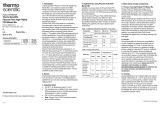 Thermo Fisher Scientific Phusion Flash High-Fidelity PCR Master Mix User guide
Thermo Fisher Scientific Phusion Flash High-Fidelity PCR Master Mix User guide
-
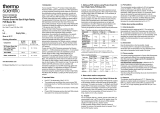 Thermo Fisher Scientific Phusion Green Hot Start II High-Fidelity PCR Master Mix User guide
Thermo Fisher Scientific Phusion Green Hot Start II High-Fidelity PCR Master Mix User guide
-
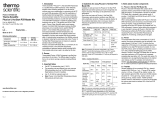 Thermo Fisher Scientific Phusion U Hot Start PCR Master Mix User guide
Thermo Fisher Scientific Phusion U Hot Start PCR Master Mix User guide
-
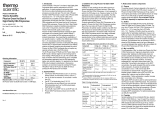 Thermo Fisher Scientific Phusion Green Hot Start II High-Fidelity DNA Polymerase User guide
Thermo Fisher Scientific Phusion Green Hot Start II High-Fidelity DNA Polymerase User guide
-
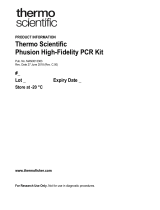 Thermo Fisher Scientific Phusion High-Fidelity PCR Kit User guide
Thermo Fisher Scientific Phusion High-Fidelity PCR Kit User guide
-
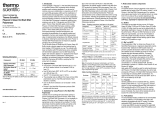 Thermo Fisher Scientific Phusion U Green Hot Start DNA Polymerase User guide
Thermo Fisher Scientific Phusion U Green Hot Start DNA Polymerase User guide
-
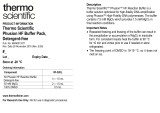 Thermo Fisher Scientific Phusion HF Buffer Pack User guide
Thermo Fisher Scientific Phusion HF Buffer Pack User guide
-
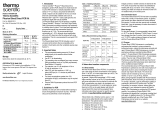 Thermo Fisher Scientific Phusion Blood Direct PCR Kit User guide
Thermo Fisher Scientific Phusion Blood Direct PCR Kit User guide
-
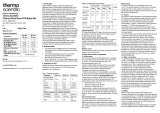 Thermo Fisher Scientific Phusion Blood Direct PCR Master Mix User guide
Thermo Fisher Scientific Phusion Blood Direct PCR Master Mix User guide
-
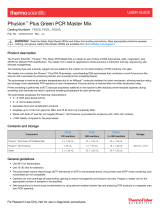 Thermo Fisher Scientific Phusion Plus Green PCR Master Mix User guide
Thermo Fisher Scientific Phusion Plus Green PCR Master Mix User guide
Other documents
-
Roche SeqCap User manual
-
Roche SeqCap EZ Library SR User manual
-
Roche AVENIO Tumor Tissue Analysis Kits Reagent Workflow User guide
-
Roche KAPA HyperPETE Somatic Plasma cfDNA Workflow v1.0 User manual
-
Roche Sequencing Solutions SeqCap Epi Enrichment System User manual
-
Roche KAPA HyperCap FFPET DNA Workflow v1.0 User manual
-
Roche LightCycler 480 / 1536 User manual
-
Roche KAPA HyperCap Workflow v3.0 User manual
-
Roche 07939493001 Sequencing Solutions SeqCap EZ HyperCap User manual
-
 RBC Bioscience MagCore Nucleic AcidExtraction Kits 36 Test User manual
RBC Bioscience MagCore Nucleic AcidExtraction Kits 36 Test User manual












